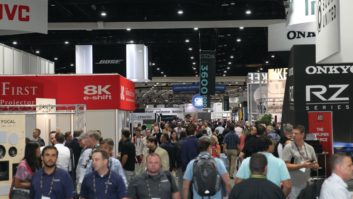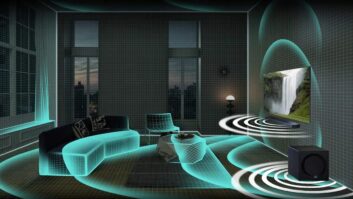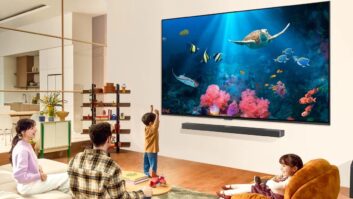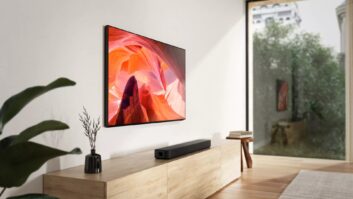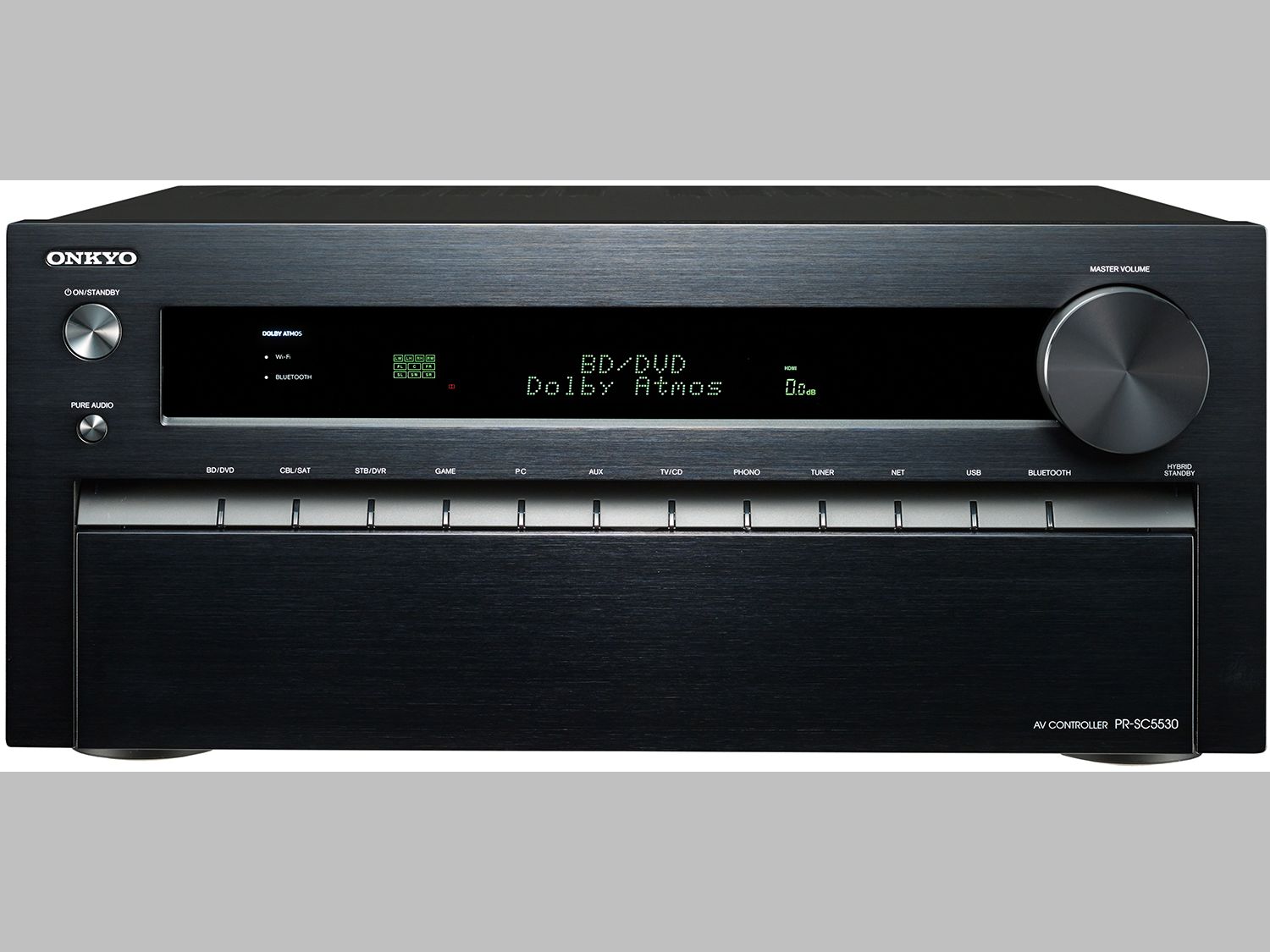
Upper Saddle River, N.J. – Dolby Atmos, Dolby’s next-generation surround-sound technology for movie theaters, is coming to home theaters this year.
Onkyo became one of the first audio suppliers to announce plans to ship audio electronics components with built-in Dolby Atmos decoding. The first three Onkyo products, shipping in August, are the $1,699-suggested TX-NR1030 and $2,399 TX-NR3030 A/V receivers and the $2,499 PR-SC5530 preamp/surround processor.
The company will also bring the technology into lower price points with a firmware update, targeted in September, to enable Dolby Atmos decoding by its midprice TX-NR636, TX-NR737 and TX-NR838 networked A/V receivers, which are already available at suggested retails of $699, $899 and $1,199, respectively.
To further expand its Atmos selection, Onkyo plans to incorporate Dolby Atmos decoding into two receiver-based home-theater receiver/speaker packages, the HT-S7700 and HT-S9700THX. The company will also offer two home-theater speaker packages designed to meet Dolby specifications for delivering an Atmos soundfield when connected to an Atmos-decoding electronics component, the company said.
Ship dates for the receiver/speaker packages and the speaker packages were not disclosed.
Onkyo didn’t say when Atmos-encoded sound tracks would be available to consumers to play back through their Atmos-decoding home theaters, but in a statement, the company said, “Later this year, entertainment enthusiasts will be able to enjoy Dolby Atmos in their home theaters.”
At this week’s CE Week in New York, the company will demonstrate Dolby Atmos.
Dolby Atmos “places and moves specific sounds anywhere in the room, including overhead,” the company said. With Onkyo’s Atmos-equipped electronics components, consumers will be able to add a pair or more of in-ceiling height speakers to complement traditional 5.1-, 7.1- or 9.1-speaker configurations. Consumers, however, would be able to enjoy the benefits of Atmos without ceiling speakers by setting up Dolby Atmos-enabled speakers, the company said. Details on speaker configurations are available at http://dolbyatmos.onkyousa.com/.
Atmos was first used in movie-theater soundtracks in 2012 for playback through Atmos-enabled cinema sound systems. The technology delivers up to 128 individual simultaneous sounds (called sound objects) to up to 64 different speakers in a cinema. Sound studios attach specific X, Y and Z coordinates to each sound to describe that sound’s location in three-dimensional space at any given time. That frees movie studios from the limitations imposed by cramming many sounds into a limited number of discrete channels, Dolby executives previously explained.
Combined with psycho-acoustic techniques, sound-object mixing creates a more life-like experience in which more individual sounds are heard clearly and distinctly, the executives said. Sounds also pan more smoothly around you, and the surround experience is improved no matter where you sit.
The technology scales down for playback through cinemas with fewer than 64 speakers, and it scales down to home theater systems with far fewer speakers. In fact, Atmos could be embedded in an active soundbar to deliver surround-sound performance that exceeds that of current soundbars with various types of virtual-surround processing, Dolby has said.
Atmos soundtracks could be placed on Blu-ray discs and played back through existing Blu-ray players. The players would spit out the Atmos bit stream through their HDMI outputs to A/V receivers and preamp processors with embedded Atmos decoders.
Onkyo’s first three Atmos-decoding components are all networked models. They are the THX Select2 Plus-certified 9.2-channel TX-NR1030 A/V receiver, THX Select2 Plus-certified 11.2-channel TX-NR3030 receiver, and the 11.2-channel THX Ultra2 Plus-certified PR-SC5530 preamp processor. All feature new HDMI 2.0 connections to pass through 4K/60Hz video, next-generation HDCP 2.2 copy-protection for passthrough of Ultra HD streaming and broadcast 4K sources, embedded Wi-Fi and Bluetooth, DTS Neo:X surround processing, and ISF Video Calibration
Each component features eight HDMI inputs. Three HDMI outputs support HDMI 2.0’s 4K/60 Hz video passthrough and 21:9 widescreen theater aspect ratio. HDMI input three and the main out support HDCP 2.2 copy protection to enable playback of streamed or broadcast Ultra HD content and future 4K studio releases. A dedicated HDMI zone two output sends 1080p video to a second display with multizone control enabled by a streaming and control app. A 4K/60 Hz HDMI sub out is designed for a dedicated projector connection.
All three components also use Marvell’s Qdeo technology to upscale low-resolution video to 1080p and to 4K. All three components include selectable ISF video calibration to optimize picture settings for TVs and projectors with night and day.
The TX-NR3030 receiver and PR-SC5530 preamp processor add 192kHz/32-bit audio processors, and the TX-NR1030 features seven 192kHz/24-bit two-channel DACs.
With DTS Neo:X post processing, the trio up-mix stereo and 5.1-channel sources to 7.1, 9.1, or 11.1 channels with front-height and/or front-wide speakers. All also feature 11.4 multichannel pre-outs, powered zone-two and powered zone-three outputs, and multiroom control via a mobile- app.
Proprietary AccuEQ room calibration measures and corrects speaker distances, levels, crossovers, and frequency response and enables playback of 7.1-channel formats at 96kHz without down-sampling, the company said. For stereo music playback, AccuEQ bypasses the front channels so sound is delivered without DSP correction potentially altering the speakers’ sound characteristics, the company said.
A turntable can be connected via a phono input, and audiophiles can connect high-end SACD and CD players via analog audio inputs.
The components also support high-resolution audio with network streaming via Wi-Fi of Double DSD, gapless 192 kHz/24-bit FLAC and WAV, and Dolby TrueHD streaming.




